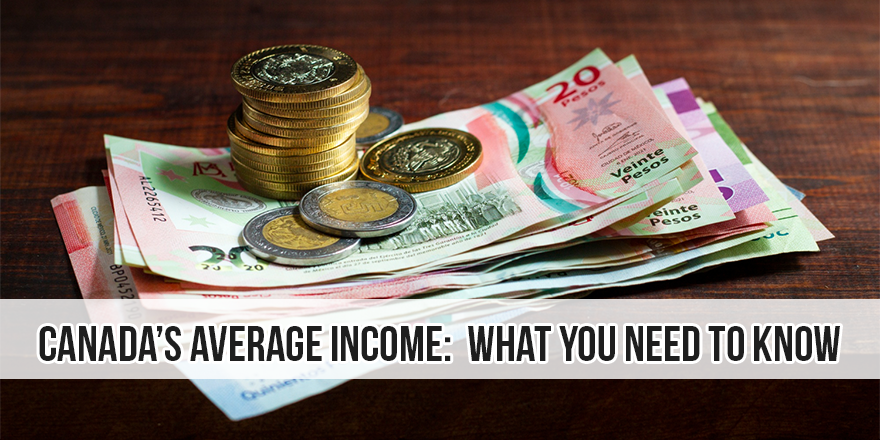Many Canadians today feel like they are earning more than ever — yet somehow saving less. Does that sound familiar?
A young couple in Ontario recently shared that their combined income had risen over the past three years, but their savings had remained unchanged. After covering rent, groceries, childcare, insurance, and the occasional medical expense, they began to wonder: “Where is our money actually going?”
This is a story that resonates across the nation. Understanding how the average income in Canada compares with the average cost of living is essential in 2025, whether you are in your 20s, building your career, or in your 50s, preparing for retirement.
Let us break it down in a way that fits every life stage.
Average Income in Canada 2025: National Overview
According to the latest data from Statistics Canada, the average income in Canada in 2025 is approximately $62,800 annually — a modest increase from 2024, driven by wage growth in healthcare, technology, and skilled trades.
But this number alone doesn’t tell the whole story. Income levels differ significantly by:
- Province or territory
- Job sector
- Education level
- Age group
Ultimately, what matters most is how your income aligns with your expenses, goals, and long-term financial security.
Average Income by Age Group in 2025
Understanding average income by age group provides valuable context — showing what’s typical for your current stage of life. Here’s a quick snapshot:
| Age Group | Average Annual Income (2025) |
| 20–24 years | $34,000 |
| 25–34 years | $52,000 |
| 35–44 years | $71,000 |
| 45–54 years | $77,000 |
| 55–64 years | $65,000 |
| 65+ years | $43,000 |
For example, a 42-year-old mechanic in Alberta earning $75,000 may feel behind compared to peers who make over $ 80,000. But compared to the national and industry averages, he’s doing just fine — sometimes, perspective is all it takes to feel more secure about your financial standing.
The Reality Check: Average Cost of Living in Canada 2025
Income alone doesn’t define financial health — cost of living plays a massive role. And in 2025, the price continues to rise significantly in major cities.
Here is an average monthly breakdown for an individual in Toronto, Vancouver, or Calgary:
| Expense Type | Monthly Cost (2025 Estimate) |
| Rent (1-bedroom apartment) | $2,100 |
| Utilities & Internet | $270 |
| Groceries | $550 |
| Transportation | $200–$300 |
| Insurance (basic) | $150–$250 |
| Miscellaneous (phone, clothing, etc.) | $400–$600 |
| Total Monthly | $3,700–$4,100 |
| Total Annual | $44,400–$49,200 |
So, if you are earning the national average income of $62,800, you may have only $13,000–$18,000 left annually after basic expenses — before taxes, debt payments, or savings. For families with children or mortgages, that buffer can shrink even more.
Why Insurance Still Matters
Insurance might feel like an extra expense, but it is really a safety net. Spending $50–$100 a month can make all the difference if something unexpected happens.
For instance, a single mother in healthcare earning around the average income might spend $68 per month ($816 per year) on term life and critical illness coverage. It is a small percentage of her income — but it protects her child’s future.
The key is finding the right balance between coverage and affordability, aligning it with your actual monthly income.
Provincial Differences in Income and Cost of Living
Where you live in Canada has a significant impact on both your income and expenses. Here’s a quick comparison:
Province Avg. Income (2025)Annual Cost of Living
Where you live in Canada has a huge impact on both your income and expenses. Here’s a quick comparison:
| Province | Avg. Income (2025) | Annual Cost of Living |
| Ontario | $64,300 | $48,000 |
| British Columbia | $61,200 | $50,400 |
| Alberta | $68,900 | $45,600 |
| Quebec | $58,000 | $43,000 |
| Nova Scotia | $54,000 | $41,000 |
| Manitoba | $56,500 | $42,500 |
For example, a family in Montreal earning around $60,000 may feel stretched, but careful budgeting can still make room for essential insurance or emergency savings.
How Inflation Affects Canadians in 2025
Inflation continues to erode purchasing power for many Canadians. While wages have risen modestly, essentials such as housing, groceries, and fuel have increased at a faster rate.
A retired couple in Halifax, for instance, may earn close to the national average but still feel financial strain. Groceries may cost 20% more than they did two years ago, and home heating costs are up by over 15%. Adjusting coverage or expenses — rather than cutting essentials — can help maintain financial stability during inflationary times.
Balancing Income, Insurance, and Long-Term Goals
Most Canadians want to protect their families, save for the future, and still enjoy life without constant financial stress. Achieving that balance starts with a plan.
Here’s a simple framework:
- Review Your Net Income
Look at what you take home after taxes — that’s your real spending power. - Set a Monthly Insurance Budget
Keep insurance premiums under 10% of your take-home pay. For many, that’s $100–$200 monthly. - Build an Emergency Fund
Save at least three months’ worth of expenses. Even small, automated deposits can grow into a safety cushion. - Review Annually
Reassess your budget and coverage each year to ensure they still fit your lifestyle.
Income and expenses change — and so should your plan.
How Canadians Use Their Income by Life Stage
Your priorities evolve with age. Here’s how most people approach income and coverage as they grow:
In Your 20s: Flexibility Matters
Young adults often focus on affordability and flexibility. Starter term policies with low premiums (sometimes under $20/month) can protect against student debt or unexpected costs while locking in low rates.
In Your 30s and 40s: Family and Security
These are typically the busiest financial years — career growth, mortgages, and raising children. Combining life, health, and critical illness insurance with savings plans, such as RRSPs or RESPs, helps balance family needs and future goals.
In Your 50s and 60s: Planning for Retirement
This stage often shifts toward estate planning and wealth transfer. Many individuals choose permanent or whole life insurance as a tax-efficient way to preserve and pass on assets.
Common Questions Canadians Ask About Income and Insurance
Q: I earn below the national average. Can I still afford insurance?
Absolutely. Even small, budget-friendly plans can offer strong protection.
Q: Should I reduce insurance if inflation gets worse?
Instead of cancelling, adjust your coverage or benefits to keep it affordable without losing essential protection.
Q: Should my insurance change as my income grows?
Yes. Higher income often comes with greater responsibilities — and your plan should evolve accordingly.
Final Thoughts: Understanding Your Income Means Taking Control
It is easy to feel overwhelmed by numbers — national averages, rising costs, and financial uncertainty. However, once you understand your actual income, expenses, and long-term goals, you can take control.
Knowing the average income in Canada gives you a benchmark.
Understanding the cost of living helps you budget wisely. Using tools like insurance and savings plans ensures that your income is working for you — not against you.
You don’t have to earn six figures to feel financially secure. You need the correct information, the right strategy, and the willingness to plan for your future. Contact us for more information.




